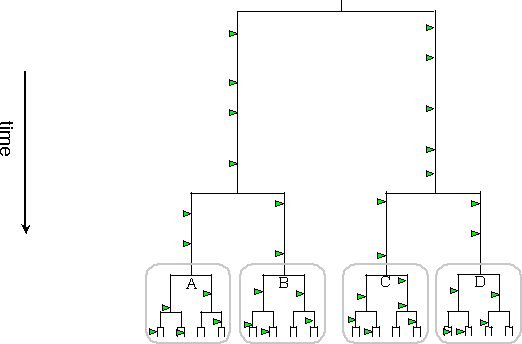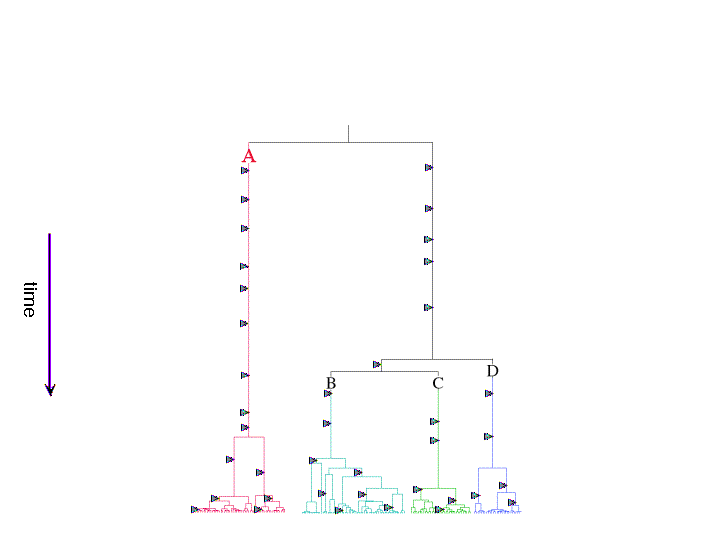
Much recent work, for example on diversity hotspots, has shown that species diversity is not distributed uniformly. Within-species (genetic) diversity is also important - it confers resistance to disease, for example, and is needed for a population to be robust to future environmental changes.
The question we are interested in is: how is the diversity that
exists in a population distributed within
it?
Diversity is the sum of all the ways that members of a population
differ from each other. Those differences arose through mutations in
the evolutionary history of the population. The evolutionary history of
a population can be represented by a genealogical tree, with all the
mutations occurring somewhere on the tree:

Supposing it looks like this, however:
